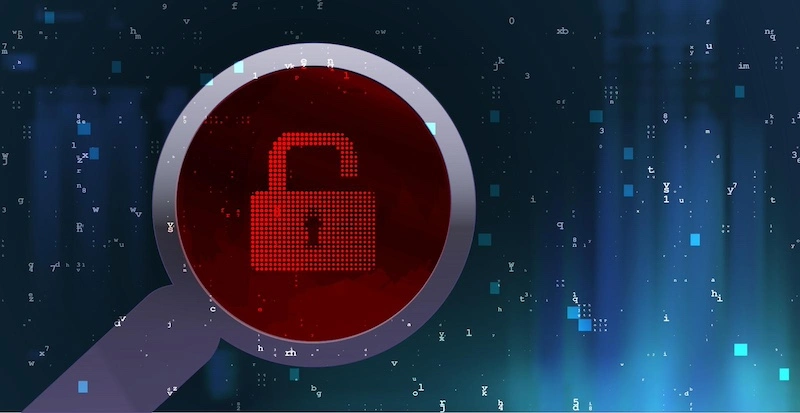In today’s digital world, cyber threats are evolving at an unprecedented pace. From ransomware attacks to phishing schemes and zero-day vulnerabilities, businesses face a constantly shifting landscape of risk. Organizations that fail to implement robust security measures can experience severe financial losses, reputational damage, and legal consequences. To address these challenges, Microsoft has developed a suite of security solutions, with the Security Center Microsoft at the core. Coupled with Cloud App Security Microsoft and Microsoft Secure Email, this ecosystem provides comprehensive protection for businesses of all sizes.
What is the Microsoft Security Response Center?
Mission and Purpose
The Microsoft Security Response Center (MSRC) is a centralized team responsible for monitoring, identifying, and responding to security threats across Microsoft products and services. Its mission is to ensure that vulnerabilities are detected quickly and remediated effectively, protecting both Microsoft users and the wider IT ecosystem. By coordinating global threat intelligence and responding in real time, MSRC plays a vital role in keeping businesses secure.
Structure and Key Teams
MSRC is composed of multiple specialized teams, including threat analysis, vulnerability management, and incident response. Each team works in tandem to assess emerging threats, investigate vulnerabilities, and implement mitigation strategies. Additionally, MSRC collaborates closely with external security researchers and organizations, sharing intelligence and insights to enhance the overall cybersecurity posture.

Microsoft Windows Security Auditing
Understanding Microsoft Windows Security Auditing
Microsoft Windows Security Auditing is a powerful tool that allows organizations to track and monitor system activities, user behaviors, and potential security breaches. It records detailed logs of access attempts, file modifications, and system changes, providing IT administrators with actionable insights. By analyzing these logs, businesses can identify unusual patterns, detect unauthorized access, and respond to potential threats before they escalate.
Integration with Security Center Microsoft
Integrating Windows Security Auditing with the Security Center Microsoft enhances threat detection and response capabilities. Audit logs feed directly into the security center, allowing administrators to correlate events across multiple endpoints and services. This integration ensures that any suspicious activity is quickly flagged and investigated, providing a proactive approach to cybersecurity.
Cloud App Security Microsoft: Safeguarding Cloud Environments
Protecting Cloud-Based Applications
As more organizations adopt cloud services, securing these environments has become essential. Cloud App Security Microsoft provides advanced monitoring for cloud applications, detecting anomalous behavior and potential vulnerabilities. It allows IT teams to enforce policies that prevent unauthorized access, data leakage, and risky user actions.
Integration with Security Center Microsoft
When combined with the Security Center Microsoft, cloud app security becomes part of a broader security ecosystem. Administrators can view and manage both on-premises and cloud assets from a single dashboard. Alerts from Cloud App Security Microsoft are fed into the security center, enabling unified threat detection and streamlined remediation processes. This integration reduces blind spots and ensures comprehensive protection across all platforms.
Microsoft Secure Email: Protecting Communication Channels
Features and Benefits
Email remains one of the most common vectors for cyberattacks, including phishing, malware, and ransomware. Microsoft Secure Email provides advanced protection by encrypting sensitive messages, detecting malicious attachments, and blocking suspicious links. By implementing this solution, businesses can ensure that email communications remain secure, safeguarding confidential information and reducing the risk of compromise.
Integration with Security Center Microsoft
Configuring Microsoft Secure Email within the Security Center Microsoft allows for centralized management of email security policies. IT administrators can monitor suspicious activity, enforce encryption requirements, and ensure compliance with internal security policies. The integration provides a holistic view of email threats, enabling rapid response and remediation when necessary.
Proactive Threat Detection and Incident Response
Monitoring and Early Detection
One of the strengths of the Security Center Microsoft is its ability to proactively monitor networks, endpoints, and applications. Using AI-powered analytics and threat intelligence, the platform detects unusual activity, such as abnormal login patterns, suspicious file access, or unexpected data transfers. Early detection allows IT teams to intervene before minor issues escalate into major security incidents.
Incident Response and Remediation
When a security threat is detected, the Security Center Microsoft provides automated and guided response actions. These may include isolating compromised systems, blocking malicious accounts, or enforcing policy changes to contain the threat. Integration with Cloud App Security Microsoft and Microsoft Secure Email ensures that both cloud-based and communication channels are also protected during an incident. Rapid response minimizes downtime, prevents data loss, and preserves business continuity.

Advanced Cybersecurity Strategies
Leveraging Microsoft Defender and Related Tools
To achieve a multi-layered defense, Security Center Microsoft integrates seamlessly with Microsoft Defender and other security services. This combination provides endpoint protection, real-time threat detection, and automated remediation. A layered approach ensures that even if one defense fails, other measures remain in place to protect sensitive data and systems.
Securing Hybrid Environments
Many organizations operate in hybrid IT environments that combine on-premises infrastructure with cloud services. Security Center Microsoft, in tandem with Cloud App Security Microsoft, provides consistent policy enforcement and monitoring across all environments. This ensures that regardless of where data resides—on local servers or in the cloud—it remains protected.
Maintaining and Improving Cyber Protection
Continuous Monitoring and Updates
Cyber threats constantly evolve, making continuous monitoring essential. Security Center Microsoft provides dashboards, alerts, and recommendations for updating security configurations, patching vulnerabilities, and improving compliance. Organizations that actively monitor and maintain their security posture reduce the risk of successful attacks.
Employee Training and Awareness
Even the best security tools are ineffective without user awareness. Training employees to recognize phishing attempts, follow password policies, and adhere to security guidelines is critical. Combining user education with the technical capabilities of Security Center Microsoft, Cloud App Security Microsoft, and Microsoft Secure Email ensures a holistic security strategy.
The Business Benefits of Using Microsoft Security Tools
Strengthening Cyber Defense
By leveraging Security Center Microsoft, businesses can proactively identify and address vulnerabilities, reducing exposure to cyber threats. This proactive approach helps maintain operational continuity and protects sensitive information.
Enhancing Compliance and Governance
Integrating Microsoft security tools into daily operations helps organizations meet regulatory requirements and internal governance standards. Microsoft Windows Security Auditing and policy enforcement contribute to demonstrating compliance to auditors and regulators.
Boosting Trust and Reputation
A strong cybersecurity posture reassures clients, partners, and stakeholders that the organization takes data protection seriously. Using integrated Microsoft security solutions signals professionalism and commitment to safeguarding digital assets.
Preparing for Future Cybersecurity Challenges
Emerging Threats
In 2025, threats are becoming more complex, including AI-driven attacks, cloud vulnerabilities, and sophisticated social engineering. Organizations must adapt by integrating advanced monitoring, threat intelligence, and proactive policy enforcement.
Building a Resilient Security Framework
To stay ahead, businesses should leverage Security Center Microsoft alongside Cloud App Security Microsoft and Microsoft Secure Email. Continuous updates, automated threat response, and employee training form a resilient framework that can secure IT safe against evolving threats.
Conclusion
Cybersecurity is no longer an optional investment—it is a business imperative. The Security Center Microsoft provides a centralized, proactive approach to identifying and mitigating threats, while Cloud App Security Microsoft ensures cloud applications are secure and Microsoft Secure Email protects communications. Together, these tools offer businesses comprehensive protection across all digital touchpoints. By combining robust technical solutions with effective policies and employee training, organizations can secure IT safe, reduce risk, and maintain trust in an increasingly hostile cyber environment.




